#Mark Weinman
Text

Bad movie I have Ant-Man, Wasp: Quantumania 2023
#Ant-Man Wasp: Quantumania#Evangeline Lilly#Paul Rudd#Michael Douglas#Michelle Pfeiffer#Jonathan Majors#Kathryn Newton#Bill Murray#Corey Stoll#Katy M. O'Brian#William Jackson Harper#Jamie Andrew Cutler#David Dastmalchian#Randall Park#Mark Weinman#Ross Mullan#Tom Clark#Leon Cooke#Nathan Blees#Durassie Kiangangu#Liran Nathan#Sam Symons#Grahame Fox#Nicola Peluso#Harrison Daniels#Brahmdeo Shannon Ramana#Russell Balogh#Leonardo Taiwo#Osian Roberts#Lucas Gerstel
6 notes
·
View notes
Text
Ant-Man and the Wasp: Quantumania (2023) Review
Scott Lang and Hope Van Dyne team up with her parents Hank Pym and Janet Van Dyne as they explore the Quantum Realm. A place that Cassie Lang had been learning about and they are all then stuck inside it, another world with many different creatures.
⭐️⭐️
(more…) “”
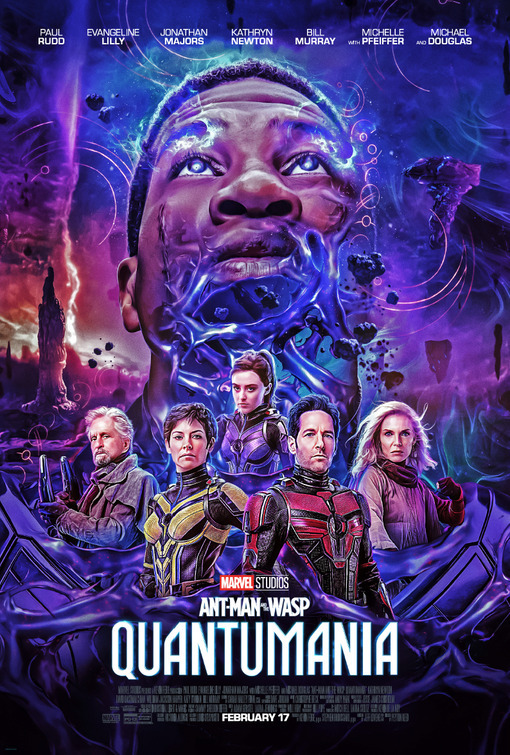
View On WordPress
#2023#Action#Adventure#Ant-Man#Ant-Man and the Wasp: Quantumania#Bill Murray#Comedy#David Dastmalchian#Evangeline Lilly#Jack Kirby#Jeff Loveness#Jonathan Majors#Kathryn Newton#Katy M. O&039;Brian#Leon Cooke#Mark Weinman#Marvel#Marvel Comics#Marvel Universe#Michael Douglas#Michelle Pfeiffer#Paul Rudd#Peyton Reed#Randall Park#Review#Ross Mullan#Tom Clark#William Jackson Harper
2 notes
·
View notes
Note
do u know where i can look for sources on animation history?
this’ll always be my first recommendation, but Mike Barrier’s book on the history of golden age cartoons is a must! his website also has some INCREDIBLY valuable information up, particularly interviews conducted with many of the golden age legends. (Corny Cole’s, Frank Tashlin’s and Lloyd Turner’s are some of my personal favorites, with Cole and Turner having some very entertaining gossip—Cole’s might have my favorite animation anecdote of all time which i won’t spoil here)
Mark Kausler is another very trusted source… Thad Komorowski, Devon Baxter (who also runs the wonderful @classicanimationart), Don Yowp.. i’ll shill Keith Scott’s book(s!) on voice acting in golden age cartoons as well, since he’s single-handedly responsible for stocking the remainder of my credit list for my reviews. Jaime Weinman’s book on the history of LT is fantastic as well, i love his writing style and agree with many of his observations
i don’t really keep up with the YouTube/video essay side of things, but you should also watch KB’s very very very informative and great series on the history of LT as well if you’re so inclined!
i’m sure there are many more i’m forgetting, but these are usually the people i default to with my research when necessary and you can all rest assured that they are very reputable sources who know their cartoon chops.
#for the books: i’m a big proponent of finding Other Means but i do think it would be great for you to toss a few bucks their way if you are#able to. ideally maybe not to amazon i just used it since it’s convenient but these are all great very informative books#anonymous#asks
32 notes
·
View notes
Text
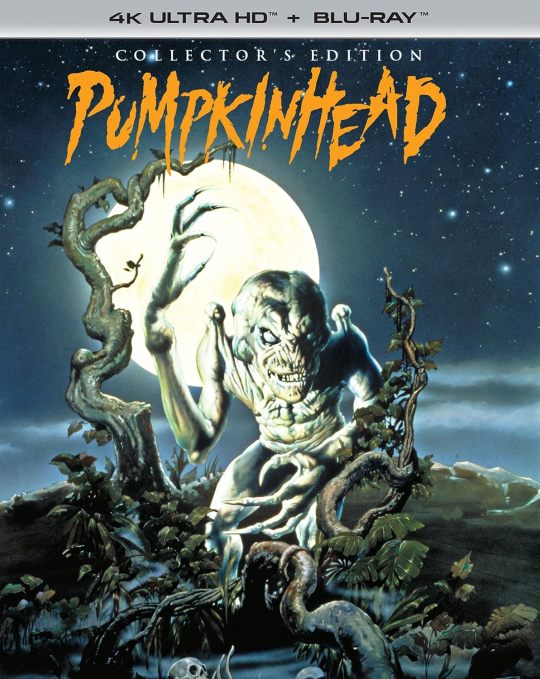
Pumpkinhead will be released on 4K Ultra HD + Blu-ray on October 10 via Scream Factory. The 1988 horror film marked the directorial debut of special effects legend Stan Winston (Jurassic Park, Terminator 2).
Shout Factory is offering an exclusive set with an 18x24 poster, a prism sticker, a set of five enamel pins by Matthew Skiff (limited to 500), and a set of five 8x10 lobby cards by Beyond Horror Design (limited to 500). Pictured below, it costs $139.99.
Mark Patrick Carducci (Neon Maniacs) and Gary Gerani (Trading Point) wrote the script. Lance Henriksen stars with John D'Aquino, Jeff East, Kerry Remsen, and Tom Woodruff Jr. as Pumpkinhead.
Pumpkinhead has been newly scanned in 4K from the original camera negative with Dolby Vision HDR and DTS-HD Master Audio 5.1 sound. Special features are listed below.

Disc 1 - 4K UHD:
Audio commentary by co-writer Gary Gerani and creature creators Tom Woodruff Jr. and Alec Gillis
Disc 2 - Blu-ray:
Audio commentary by co-writer Gary Gerani and creature creators Tom Woodruff Jr. and Alec Gillis
Interview with co-writer Richard Weinman
Interview with actor John D'Aquino
Interview with actor Matthew Hurley
Remembering the Monster Kid: A Tribute to Stan Winston featurette
Evolution of a Demon featurette
The Cursed and the Damned featurette
The Tortured Soul of Ed Harley featurette
Constructing Vengeance featurette
Razorback Holler featurette
Demonic Toys featurette
Behind-the-scenes footage
Still gallery
Theatrical trailer
When a group of teenagers inadvertently kill his only son, Ed Harley (Lance Henriksen) seeks the powers of a backwoods witch to bring the child back to life. But instead, she invokes "Pumpkinhead" – a monstrously clawed demon which, once reborn, answers only to Ed's bloodlust. But as the creature wreaks its slow, unspeakable tortures on the teens, Ed confronts a horrifying secret about his connection to the beast – and realizes that he must find a way to stop its deadly mission before he becomes one with the creature forever.
Pre-order Pumpkinhead.
#pumpkinhead#horror#80s horror#1980s horror#stan winston#lance henriksen#scream factory#dvd#gift#80s movies#1980s movies#horror movies#matthew skiff#beyond horror design#horror film
38 notes
·
View notes
Photo
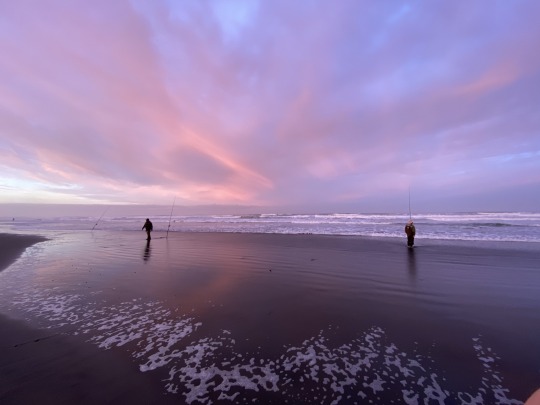
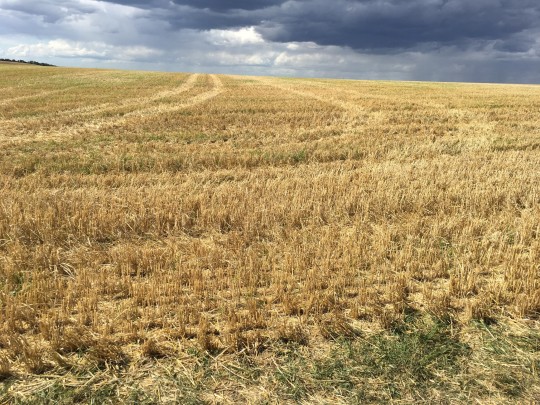

To hell with the New York Times's top 25 commercial/luxurious travel experiences. You can have your own. Here's some of mine, and reflecting on them makes me feel quite replete and not in need of any gourmet well-beaten trails. I hope you have yours.
--travel the pilgrimage trail of St. Jacques de Compostelle from Paris to the Spanish border as a teenage art historian, with the great Mme Francoise Weinman interpreting, 1978.
--bathe in a bathtub on a hillside on Western Shoshone land above matriarchs and federal challengers Mary and Carry Dann's ranch in eastern Nevada while listening to Lucinda Williams for the first time (music courtesy of Lauri Di, who then gave me the homemade cassette), 1991.
--raft trip on assignment for Sierra Magazine, 1995, in a roadless wilderness the size of Portugal in NE British Columbia, where the whole community of wildlife was living its many lives largely undisturbed.
--Dance all night in the streets of Paris, Fete de la Musique, circa 1998, be serenaded by Timothy O'Toole's brother with Marianne Faithful's "Ballad of Lucy Jordan" in parting. (Research for Wanderlust was the official reason to be there.)
--Seattle Nov. 30-Dec. 1, when the protest in the streets galvanized the poor countries to resist the World Trade Organization's bullying on behalf of the rich corporations and countries and the fate of the world took a left turn. "When hope and history rhyme." Thank you David Solnit, who had a lot to do with it.
--Hike with Lucy Lippard to the remote valley whose entrance is framed by two great natural stone slabs on each of which a life-sized cornstalk petroglyph appears; take Barry Lopez to see the life-size bear petroglyph nearby and the giant zig-zag snake petroglyphs, get drenched in a monsoon rain together, New Mexico circa 1999-2001 or so
--Multiple times participating in the Good Friday pilgrimage to Chimayo, NM, circa 1998-2010, witnessing the landscape, the devotion and dedication, the generosity, and the low-rider Cadillac of the stations of the cross.
--find the exact places Eadweard Muybridge, Carleton Watkins, Ansel Adams, and Edward Weston stood to make their iconic pictures of Yosemite with Mark Klett and Byron Wolfe (in what became our book Yosemite in Time), and camp out in the supremely serene jeffrey pine forest south of Mono Lake while working on the project, 2001-4
--repeat visits to New Orleans to first understand the terrible things of Hurricane Katrina and then fall in love with the wonderful culture and dance in various second lines, etc., 2006 onward....
--Zapatista Women's Encuentro, late Dec.-January 1, Chiapas, Mexico, with Marina Sitrin and Sam Sitrin
--Iceland, summer of 2008 (partly melancholy, but studded with epiphanies): "I traveled a little, and on the south coast of Iceland had one magnificent midsummer day that began with a long walk on a path edged with tiny flowers past the largest glacier in Europe, went on to a bay in which the glacier was calving icebergs that were vivid blue in a blue inlet of the sea, and then traversed a long strand of wet sand that reflected the white clouds and blue sky so that heaven and earth were indistinguishable, and the clouds overhead seemed to be almost close enough to touch and those near the horizon seemed to be very near infinity. It was as close to a vision of paradise as I’ve been granted with my eyes open. After that I saw another bay full of hundreds of swans and a steep valley through which dozens of thin waterfalls trickled and poured from the heights. That day ended at a robin’s nest Klara showed me in the low willows in the quiet light at midnight, five small mottled eggs like turquoise stones."
--first visit to David Rumsey's map collection, San Francisco, with David's visionary insight into cartography....-
-two weeks aboard a Swedish vessel circumambulating Svalbard in the high Arctic, 2011
--Arctic National Wildlife Refuge, raft trip, summer solstice, 2014 (also working as a journalist), but also thank you Michael Brune and Dan Ritzman https://www.theguardian.com/.../alaska-wildlife-sanctuary...
--Mt Burdell in green winter splendor, over so many years...
--wake up at Standing Rock to see thousand of joyful people celebrating their determination and solidarity on the great green prairie, 2016 (I went there to report for the Guardian, all too briefly)
--Traveling with Dolpo Tulku rimpoche through Dolpo, the Tibetan plateau/Buddhist land in which he is the spiritual leader, fall 2017, with Roshi Joan Halifax and various others, and doing another version of that route in 2015 that repeats Peter Matthiesson's in The Snow Leopard, including being welcomed into Shey Gompo, and seeing people engaged in daily life on almost medieval terms: plowing with yaks, threshing and reaping and winnowing by hand, traveling on foot or by beast, weaving on wooden looms, tending livestock, crossing high passes up to 17,600' high, spending a month on foot (and occasionally horse)....
--the enchanting walk from the Baldock train station to the cottage Orwell lived in 1936-1940s, through wheat fields full of flints formed undersea and rural rights of way, crossing the ancient Icknield Way (returning to where I first met those roses he planted, if they're his, on Nov. 2, 2017), 2019, walking it again this summer with Rob Macfarlane, 2022
--So many mornings of glorious light at Ocean Beach, because like all of you I also live in the destination.
--camping with my great-nieces who make everything new and exciting again. p.s. Just a reminder: I have had adventures, but my everyday life is staying home quietly turning words around and trying to make meaning with them.
[Rebecca Solnit ]
23 notes
·
View notes
Text
Though it is often played for laughs (sometimes by graduate students themselves), graduate student life is marked by habitual scarcity. Whether it's about their groceries, their mental health, their physical well-being, or professional support, graduate students are expected to make do, or, failing that, to do without. It is assumed such conditions are, if not ideal, at least temporary. Yet such experiences, absorbed and unspoken, inscribe themselves upon the graduate student body: as anxiety, depression, hunger, exhaustion, fear, or even illness, all of which are exacerbated by financial instability and professional precarity. Whether or not graduate students choose to speak about these conditions, their bodies carry memories and markers of exploitative labor conditions, professional "in-betweenness." and injustice related to race, ethnicity, gender, dis/ability, age, and so on when they take on the role of teacher, tutor, or administrator. And since those in power consider graduate school hardships to be a "rite of passage," the hardships are subsequently silenced and normalized.
Kelsie Walker, Morgan Gross, Paula Weinman, Hayat Bedaiwi, and Alyssa McGrath, from "Graduate Student Bodies on the Periphery," Our Body of Work: Embodied Administration and Teaching (2022)
#graduate school#rhetcomp#on teaching#on writing#embodiment#feminism#academia#readings#Kelsie Walker#Morgan Gross#Paula Weinman#Hayat Bedaiwi#Alyssa McGrath#quotations
2 notes
·
View notes
Text
With a serial strangler on the loose, a bookkeeper wanders around town searching for the vigilante group intent on catching the killer.
Credits: TheMovieDb.
Film Cast:
Kleinman: Woody Allen
Prostitute: Kathy Bates
Student Jack: John Cusack
Irmy: Mia Farrow
Prostitute: Jodie Foster
Hacker’s Follower: Fred Gwynne
Clown: John Malkovich
Alma: Julie Kavner
Marie: Madonna
Magician: Kenneth Mars
Eve: Kate Nelligan
Doctor: Donald Pleasence
Prostitute: Lily Tomlin
Mr. Paulsen: Philip Bosco
Spiro’s Assistant: Robert Joy
Simon Carr: Wallace Shawn
Vogel’s Follower: Kurtwood Smith
Priest: Josef Sommer
Hacker: David Ogden Stiers
Cop at Police Station: John C. Reilly
Woman with Baby: Eszter Balint
Vigilante: James Rebhorn
Roustabout: Richard Riehle
Cop: William H. Macy
Undesirables Onlooker: Fred Melamed
Killer: Michael Kirby
Vigilante: Victor Argo
Vigilante: Daniel von Bargen
Landlady: Camille Saviola
Dwarf: Tim Loomis
Fat Lady: Katy Dierlam
Strongman: Dennis Vestunis
Prostitute: Anne Lange
Student: Andy Berman
Student: Paul Anthony Stewart
Student: Thomas L. Bolster
Police Chief: Greg Stebner
Cop at Police Station: Peter Appel
Cop at Police Station: Brian Smiar
Cop at Police Station: Michael P. Troy
Cop at Police Station: Remak Ramsay
Cop at Police Station: Ron Turek
Bartender: Peter McRobbie
Cop with Priest: Ira Wheeler
Baby: Rebecca Gibson
Hacker’s Follower: Robert Silver
Spiro: Charles Cragin
Vigilante with Spiro: Tom Riis Farrell
Vigilante with Spiro: Ron Weyand
Roustabout: Max Robinson
Film Crew:
Additional Casting: Todd M. Thaler
Casting: Juliet Taylor
Writer: Woody Allen
Producer: Robert Greenhut
Assistant Editor: Mark Livolsi
Costume Design: Jeffrey Kurland
Production Coordinator: Helen Robin
Executive Producer: Charles H. Joffe
Executive Producer: Jack Rollins
Editor: Susan E. Morse
Hairstylist: Romaine Greene
Assistant Art Director: W. Steven Graham
Casting Associate: Laura Rosenthal
Supervising Sound Editor: Robert Hein
Director of Photography: Carlo Di Palma
Gaffer: Ray Quinlan
Sound Designer: Dan Sable
Foley Artist: Brian Vancho
Set Decoration: George DeTitta Jr.
Assistant Costume Designer: Donna Zakowska
Production Sound Mixer: James Sabat
Production Design: Santo Loquasto
Assistant Sound Editor: Stuart Levy
Co-Producer: Joseph Hartwick
Sound Re-Recording Mixer: Lee Dichter
Construction Coordinator: Ron Petagna
Key Scenic Artist: James Sorice
Production Assistant: Robert C. Albertell
Makeup Artist: Bernadette Mazur
First Assistant Director: Thomas A. Reilly
Art Direction: Speed Hopkins
Property Master: James Mazzola
Assistant Production Coordinator: Ilyse A. Reutlinger
Still Photographer: Brian Hamill
Standby Carpenter: Joseph A. Alfieri Jr.
Scenic Artist: Cosmo Sorice
Set Dresser: Dave Weinman
Assistant Camera: Michael Green
Sound Recordist: Frank Graziadei
Camera Operator: Dick Mingalone
Script Supervisor: Kay Chapin
Set Decoration: Amy Marshall
Boom Operator: Louis Sabat
Dolly Grip: Ronald Burke
Key Grip: Robert Ward
Wardrobe Supervisor: Patricia Eiben
Second Assistant Camera: Michael Caracciolo
Camera Trainee: David E. Baron
Art Department Coordinator: Glenn Lloyd
Second Assistant Director: Richard Patrick
Assistant Editor: William Kruzykowski
Transportation Captain: Peter Tavis
Transportation Captain: Harold ‘Whitey’ McEvoy
Production Assistant: Justin Moritt
Wardrobe Supervisor: Bill Christians
Foley Artist: Elisha Birnbaum
Additional Casting: Judie Fixler
Key Construction Grip: Vincent Guarriello
Production Assistant: Danielle Rigby
Projection: Carl Turnquest
Best Boy Electric: Jim Manzione
Costume Assistant: Lauren Gibson
Assistant Art Director: Robert Perdziola
Foley Editor: Lori Kornspun
Assistant Art Director: Peter Eastman
Location Scout: Megan Monaghan
Assistant Art Director: Richard Michael Miller
Apprentice Sound Editor: Yasmine Amitai
Location Manager: James A. Davis
Movie Reviews:
0 notes
Text
Clive Judd makes theatre that takes your breath away; is there a better director of solo plays around? Not enough to be an award winning playwright and acclaimed director, he also runs the wonderful Birmingham independent bookshop, Voce Books. He helps actors achieve their finest work. Don't miss Mark Weinman blowing minds down at Southwark Playhouse!
0 notes
Photo

Great price on this 2024-W Proof American Silver Eagle OGP/COA ONLY: $90.00 2024-W Proof American Silver Eagle Obverse Design: The classic Walking Liberty design by Adolph A. Weinman featured on the coin’s obverse has long been a collector favorite. It depicts Liberty in full stride, enveloped in folds of the flag, with her right hand extended and branches of laurel and oak in her left. The United States Mint returned to its original historical assets to render a closer reflection of Weinman’s original version and detail that include the addition of his traditional artist mark. Inscriptions are “LIBERTY,” “2024,” and “IN GOD WE TRUST.”Reverse Design:Design introduced in 2021. Features an eagle as it approaches a landing, carrying an oak branch, as if to add it to a nest. Inscriptions are “UNITED STATES OF AMERICA,” “E PLURIBUS UNUM,” “1 OZ. FINE SILVER,” and “ONE DOLLAR.” The coins’ added security features include a reeded edge variation. The coin is encapsulated then placed in a stylish clamshell and elegant black presentation box. The box is adorned with the official United States Mint seal, with an outer sleeve incorporating an image of the obverse coin design. It is accompanied by a certificate of authenticity bearing an image of the obverse. https://www.thecoinshop.shop/proof-american-silver-eagles/2024-w-proof-american-silver-eagle-ogpcoa View MORE Proof American Silver Eagles https://www.thecoinshop.shop/proof-american-silver-eagles
0 notes
Text
By Jonathan Taylor
Jet-lagged and exhausted, LeVar Burton rallied his youthful energy as he exited customs at New York’s JFK airport and climbed into a waiting limo. He had just traveled from the Zambezi River in Zambia, where he had filmed a segment for the April 4, 1982, episode of ABC’s “The American Sportsman.”
The car made its way from Queens to Manhattan, dropping him off at Central Park. He was there to shoot the pilot for a new public television show aimed at encouraging early learners to love books.
The show was to be called “Reading Rainbow.”
He was not entirely sure what the job was, and certainly not aware that it would become one of his signature roles. It didn’t matter. The son of a former teacher and a passionate believer in learning, reading, exploring and growing, Burton was all-in on this new adventure.
“Everything about it just made sense,” Burton says, more than 40 years later. “It was about literature and the written word, it was about kids, it was about having kids discover the power of literature through the medium of television and that was why ‘Reading Rainbow’ was such a radical departure from other shows of its era.”
From the moment he first met the “Reading Rainbow”crew, Burton demonstrated not one iota of star attitude.
“He showed up, got out of the limo, and I said, ‘Hey, how are you?’” Cecily Truett, co-creator, head writer and producer on the show for most of its run, recalls. “He said, ‘Well, I just got off the red-eye, so…’ I said, ‘Well, what can we do for you? How can we make you comfortable?’ He said, ‘You know, I’d love to have a glass of orange juice and a toothbrush.’ And that was it.
“He walked right on to the set, he ran through his lines and for the next 25 years he was on the set, on time, with his lines memorized....”
“For 155 shows,” her husband, Larry Lancit, another of the show’s creators, producers and directors, added.
Burton had to hurry back from Africa to New York because a skeleton crew was waiting to shoot the pilot episode, including anxious documentarians Truett and Lancit and fellow creator and executive producer Twila C. Liggett, a onetime elementary school teacher who had realized TV was the ideal medium to reach and influence young children. If “Reading Rainbow” delivered on its promise that a children’s show focused on the joy and value of reading could be set in the real America rather than on Sesame Street or in Mister Rogers’ neighborhood, it would get the blessing from PBS.
It did the trick. This month marks the 40th anniversary of the national premiere of one of the longest-running children’s shows in the history of public television.
That pilot episode centered around the children’s book “Gila Monsters Meet You at the Airport” by Marjorie Weinman Sharmat and Byron Barton. It is about a young New Yorker whose family is moving to Arizona, and who faces the fear felt by any kid torn from the community he or she has known and grown up with to resettle someplace distant, almost alien. (Spoiler alert: No desert animals meet the young man and his family upon arrival.)
As was the case in every episode that followed, Burton played host, trusted friend and calming presence. He was the face of the show and its most visible advocate, which was needed, since Liggett was forever searching for funding to pay for the show’s ambitious storytelling and wanderlust. Having the charismatic, passionate host on every episode and advocating on behalf of the show to Congress, parent groups and elsewhere made Liggett’s job much easier. Burton stayed with the show even when he got a much higher-profile job, as Geordi La Forge on the syndicated “Star Trek: The Next Generation.”
With the pilot shot — once the show got on the air, it actually was Episode 8 — all that was needed was the blessing, and partial funding, of the Corp. for Public Broadcasting (CPB), the private, nonprofit corporation charged by Congress to financially support PBS shows. Rev. Donald L. Marbury, at that time the vice president for programming at CPB, recalls the high-stakes meeting when Liggett presented the results of the pilot to him and his colleagues:
“In such meetings you couldn’t show too much enthusiasm or give too many positive signals because we were the Corporation, and we were bound by all kinds of processes and procedures. We did not have dollars to just say, ‘OK, we get it. Here, take the money.’ We had to go through panels, we had to go through outside groups and experts to come in and ratify what we thought were good ideas.”
And yet, because he remembered his own elementary school teacher decades before imbuing him with a love of books and reading, Marbury concedes, “When Twila comes in with this concept for ‘Reading Rainbow,’ you know I’m predisposed. I’m a kindred spirit. And so, she kind of had me from jump street, if you will. She had me at hello.”
Meanwhile, Lancit and Truett took a well-earned vacation to Puerto Rico, though their minds were elsewhere.
“Our whole future depended on whether we were going to do this thing or not because we were going to have to do 15 [episodes that first season],” Lancit remembers. “They wanted to show it in summer of ’83 and here it was January of ’82. So, we’re gonna have to really haul ass to get it all done.”
“We’re sitting on a balcony in Puerto Rico, overlooking the ocean and there was a tremendous rainstorm, when a big rainbow came across the sky and damned if the phone didn’t ring. It was Twila. She said they loved it at CPB and basically authorized the funds,” Lancit recalls. “So, it looks like we’re going to get started.”
Much of what became the template for “Reading Rainbow” — built around Liggett’s ideas that the show should encourage early readers to read to learn instead of simply learning to read — had already been decided earlier in the process, after the Lancits, Liggett and a few others had received the initial OK from CPB to develop the pilot.
“We knew what we wanted,” Lancit says. “If there was going to be a feature book and some sort of adaptation of that book, we decided that there really needed to be some sort of touchstone in real life that made the book come alive, by doing some sort of real-life experience that you can attach to the story that’s in the book. That was the genesis of what we called our field segment. And then we said, ‘Well, how do we introduce additional books?’ And we said, ‘Let’s do book reviews,’ and so we came up with the idea to have kids at the end of each show review books that were similar in scope, or message, or story.”
Aside from host LeVar Burton’s signature line before the young children would tout their favorite book — “But don’t take my word for it” — the show was different each time, which kept it fresh. A new feature book was showcased every episode, read by various known and unknown voices.
And unlike most other shows for kids, whether on PBS, commercial channels or, by the mid ’80s, cable, “Reading Rainbow”had no fixed set. Instead, it would travel — often to Southern California, in part to be close to LeVar Burton’s home — as well as across the country, around the world (when budgets allowed, which wasn’t often) or just across New York City, in pursuit of the right expert, the ideal setting, the most photogenic location to shoot a field piece. And, of course, there were boys and girls of all races and ethnicities to recommend additional reading options.
Among the notables who narrated the Feature Book that first season were actors Madeline Kahn (“Bea and Mrs. Jones”), James Earl Jones (“Bringing the Rain to Kapiti Plain”) and Lauren Tom (“Liang and the Magic Paintbrush”), and singer Lou Rawls (“Ty’s One-Man Band”).
One other book featured that first season was “Arthur’s Eyes,” read by a pre-controversy Bill Cosby), which author Marc Brown remembers as a key moment for him, “because that’s when Arthur started to gain traction with teachers, librarians, kids.”
In fact, it wasn’t long after that book was featured on “Rainbow”that Brown was approached by PBS about adapting his Arthur stories into an animated series. WGBH Boston producer Carol Greenwald emphasized that the aim of the series was to encourage kids to read.
That was different from some of the other offers he’d received to bring his popular aardvark character to TV. “I had had two other inquiries about Arthur on television, but it was a Saturday morning kind of thing. I would’ve had no control over what would happen to Arthur; they could put a gun in his backpack. And I didn’t want that to happen.”
Indeed, while PBS Kids, as it’s known now, was and remains a safe and welcoming destination for youngsters, it wasn’t the only place for kids to be entertained by TV. Shows aimed at young viewers aired on the big networks as well as on local stations, especially on Saturday mornings, but also in the afternoons, after school.
Until the passage of the Children’s Television Act in 1990, which wasn’t fully implemented until 1993, broadcast TV was largely unregulated — or, more accurately, was self-regulated.
That’s how a show like “He-Man and the Masters of the Universe,” which also began in 1983,got on the air. Based on the He-Man toys from Mattel, the series’ blend of product and programming spurred loud objections from parent groups, TV watchdogs and others before becoming a huge hit on commercial TV.
Sen. Edward Markey (D-Mass.) has waged a career-long crusade to hold broadcasters accountable for what they aired, particularly to children. He recalls, not at all fondly, his battles with President Ronald Reagan’s Federal Communications Commission, under the leadership of Chairman Mark C. Fowler, which followed the Reaganomics model and rescinded all of the regulations governing children’s TV.
So, when Markey, then a member of the House of Representatives, managed to pass a bill in 1984 that reinstated and even strengthened the rules that had formerly been in place, it was no surprise that the president vetoed it. Markey got it passed again during the first President Bush’s term, and he too refused to sign it, twice. It wasn’t until Democrat Bill Clinton became president and appointed his own FCC chairman, Reed Hundt, that the Children’s Television Act finally became law.
Even now, 30 years later, Markey remains bitter about the fights and compromises necessary to pass meaningful legislation regarding kids’ TV. Markey says the Reagan and Bush administrations “showed a deep-seated obeisance to the broadcast industry, almost genuflecting at their every whim, notwithstanding the harm that was being done to children across the country.”
It was in this environment that “Reading Rainbow”launched, a co-production of Nebraska Educational TV in Lincoln, where Liggett was based, and WNED in Buffalo, which was involved in the show from the beginning as well. Premiering any show is challenging, but it was logarithmically harder for this show, which had no fixed location, needed rights to multiple books for each episode, had to fight hard, particularly in the early seasons, to get placement on local PBS stations, and do all of it under tight budget constraints.
As far as figuring out which books to feature, Truett remembers coming up with basic standards, in collaboration with Liggett and some of the academic advisors the producers consulted regularly.
“Is it telegenic? Does it lead to an adventure that would excite the viewer? Is it kid-friendly? Is it about dinosaurs? (That’s a no-brainer.) Did it meet our diversity standards? Were there books that were reflective of children of all colors and cultures? … There were many, many standards for what got selected as a feature book.”
Then there was the matter of locking down the rights to spotlight the books, which was predictably agonizing, at least in the first season. The hard work of securing rights, and money, fell to Liggett. She chuckles now at the memory of dealing with skeptical publishers for rights to the book, since by the end of the first season, publishers couldn’t do enough to get their books on the show.
But in 1982, as the first season of shows was coming into focus, it was still an untested, unproven proposition when Liggett went to Simon & Schuster to get rights to adapt “Gila Monsters” for TV.
The Simon & Schuster executive couldn’t understand why her company would let a TV show have rights to the book; for publishing houses, the so-called “boob tube” was the enemy of reading.
“When we first started approaching book publishers to tell them about this and secure these rights, we were initially greeted with a lot of suspicion and questions like ‘What’s this all about?’” Marc Bailin, Truett and Lancit’s attorney who helped negotiate book rights, remembers. “Within a few years, the publishers were clamoring to have their book be a ‘Reading Rainbow’ book.”
That’s no surprise since, from the start, having a book featured on the show “increased the book sales of a lot of those titles markedly,” Bailin says.
By the time “Reading Rainbow” aired its final episode on Nov. 10, 2006, it had produced 155 in all, each with the same essential structure, each different in content from the other 154. It taught multiple generations of young children to love to read, to explore and keep their eyes open to new experiences, new people, new ideas.
Never the icon that its friendly rivals “Sesame Street” or “Mister Rogers’ Neighborhood” were, and drawing nowhere near the audience numbers of cable TV behemoth Nickelodeon’s hits, “Reading Rainbow”was still a show watched and beloved by early readers, their parents, teachers and others.
As Burton explains, “We recognized the impact on the audience and we leaned into it. It made sense, we were there creating content for children to enhance their minds, hearts and souls, right? And given that opportunity, we didn’t want to squander it.”
0 notes
Text
By Jonathan Taylor
Jet-lagged and exhausted, LeVar Burton rallied his youthful energy as he exited customs at New York’s JFK airport and climbed into a waiting limo. He had just traveled from the Zambezi River in Zambia, where he had filmed a segment for the April 4, 1982, episode of ABC’s “The American Sportsman.”
The car made its way from Queens to Manhattan, dropping him off at Central Park. He was there to shoot the pilot for a new public television show aimed at encouraging early learners to love books.
The show was to be called “Reading Rainbow.”
He was not entirely sure what the job was, and certainly not aware that it would become one of his signature roles. It didn’t matter. The son of a former teacher and a passionate believer in learning, reading, exploring and growing, Burton was all-in on this new adventure.
“Everything about it just made sense,” Burton says, more than 40 years later. “It was about literature and the written word, it was about kids, it was about having kids discover the power of literature through the medium of television and that was why ‘Reading Rainbow’ was such a radical departure from other shows of its era.”
From the moment he first met the “Reading Rainbow”crew, Burton demonstrated not one iota of star attitude.
“He showed up, got out of the limo, and I said, ‘Hey, how are you?’” Cecily Truett, co-creator, head writer and producer on the show for most of its run, recalls. “He said, ‘Well, I just got off the red-eye, so…’ I said, ‘Well, what can we do for you? How can we make you comfortable?’ He said, ‘You know, I’d love to have a glass of orange juice and a toothbrush.’ And that was it.
“He walked right on to the set, he ran through his lines and for the next 25 years he was on the set, on time, with his lines memorized....”
“For 155 shows,” her husband, Larry Lancit, another of the show’s creators, producers and directors, added.
Burton had to hurry back from Africa to New York because a skeleton crew was waiting to shoot the pilot episode, including anxious documentarians Truett and Lancit and fellow creator and executive producer Twila C. Liggett, a onetime elementary school teacher who had realized TV was the ideal medium to reach and influence young children. If “Reading Rainbow” delivered on its promise that a children’s show focused on the joy and value of reading could be set in the real America rather than on Sesame Street or in Mister Rogers’ neighborhood, it would get the blessing from PBS.
It did the trick. This month marks the 40th anniversary of the national premiere of one of the longest-running children’s shows in the history of public television.
That pilot episode centered around the children’s book “Gila Monsters Meet You at the Airport” by Marjorie Weinman Sharmat and Byron Barton. It is about a young New Yorker whose family is moving to Arizona, and who faces the fear felt by any kid torn from the community he or she has known and grown up with to resettle someplace distant, almost alien. (Spoiler alert: No desert animals meet the young man and his family upon arrival.)
As was the case in every episode that followed, Burton played host, trusted friend and calming presence. He was the face of the show and its most visible advocate, which was needed, since Liggett was forever searching for funding to pay for the show’s ambitious storytelling and wanderlust. Having the charismatic, passionate host on every episode and advocating on behalf of the show to Congress, parent groups and elsewhere made Liggett’s job much easier. Burton stayed with the show even when he got a much higher-profile job, as Geordi La Forge on the syndicated “Star Trek: The Next Generation.”
With the pilot shot — once the show got on the air, it actually was Episode 8 — all that was needed was the blessing, and partial funding, of the Corp. for Public Broadcasting (CPB), the private, nonprofit corporation charged by Congress to financially support PBS shows. Rev. Donald L. Marbury, at that time the vice president for programming at CPB, recalls the high-stakes meeting when Liggett presented the results of the pilot to him and his colleagues:
“In such meetings you couldn’t show too much enthusiasm or give too many positive signals because we were the Corporation, and we were bound by all kinds of processes and procedures. We did not have dollars to just say, ‘OK, we get it. Here, take the money.’ We had to go through panels, we had to go through outside groups and experts to come in and ratify what we thought were good ideas.”
And yet, because he remembered his own elementary school teacher decades before imbuing him with a love of books and reading, Marbury concedes, “When Twila comes in with this concept for ‘Reading Rainbow,’ you know I’m predisposed. I’m a kindred spirit. And so, she kind of had me from jump street, if you will. She had me at hello.”
Meanwhile, Lancit and Truett took a well-earned vacation to Puerto Rico, though their minds were elsewhere.
“Our whole future depended on whether we were going to do this thing or not because we were going to have to do 15 [episodes that first season],” Lancit remembers. “They wanted to show it in summer of ’83 and here it was January of ’82. So, we’re gonna have to really haul ass to get it all done.”
“We’re sitting on a balcony in Puerto Rico, overlooking the ocean and there was a tremendous rainstorm, when a big rainbow came across the sky and damned if the phone didn’t ring. It was Twila. She said they loved it at CPB and basically authorized the funds,” Lancit recalls. “So, it looks like we’re going to get started.”
Much of what became the template for “Reading Rainbow” — built around Liggett’s ideas that the show should encourage early readers to read to learn instead of simply learning to read — had already been decided earlier in the process, after the Lancits, Liggett and a few others had received the initial OK from CPB to develop the pilot.
“We knew what we wanted,” Lancit says. “If there was going to be a feature book and some sort of adaptation of that book, we decided that there really needed to be some sort of touchstone in real life that made the book come alive, by doing some sort of real-life experience that you can attach to the story that’s in the book. That was the genesis of what we called our field segment. And then we said, ‘Well, how do we introduce additional books?’ And we said, ‘Let’s do book reviews,’ and so we came up with the idea to have kids at the end of each show review books that were similar in scope, or message, or story.”
Aside from host LeVar Burton’s signature line before the young children would tout their favorite book — “But don’t take my word for it” — the show was different each time, which kept it fresh. A new feature book was showcased every episode, read by various known and unknown voices.
And unlike most other shows for kids, whether on PBS, commercial channels or, by the mid ’80s, cable, “Reading Rainbow”had no fixed set. Instead, it would travel — often to Southern California, in part to be close to LeVar Burton’s home — as well as across the country, around the world (when budgets allowed, which wasn’t often) or just across New York City, in pursuit of the right expert, the ideal setting, the most photogenic location to shoot a field piece. And, of course, there were boys and girls of all races and ethnicities to recommend additional reading options.
Among the notables who narrated the Feature Book that first season were actors Madeline Kahn (“Bea and Mrs. Jones”), James Earl Jones (“Bringing the Rain to Kapiti Plain”) and Lauren Tom (“Liang and the Magic Paintbrush”), and singer Lou Rawls (“Ty’s One-Man Band”).
One other book featured that first season was “Arthur’s Eyes,” read by a pre-controversy Bill Cosby), which author Marc Brown remembers as a key moment for him, “because that’s when Arthur started to gain traction with teachers, librarians, kids.”
In fact, it wasn’t long after that book was featured on “Rainbow”that Brown was approached by PBS about adapting his Arthur stories into an animated series. WGBH Boston producer Carol Greenwald emphasized that the aim of the series was to encourage kids to read.
That was different from some of the other offers he’d received to bring his popular aardvark character to TV. “I had had two other inquiries about Arthur on television, but it was a Saturday morning kind of thing. I would’ve had no control over what would happen to Arthur; they could put a gun in his backpack. And I didn’t want that to happen.”
Indeed, while PBS Kids, as it’s known now, was and remains a safe and welcoming destination for youngsters, it wasn’t the only place for kids to be entertained by TV. Shows aimed at young viewers aired on the big networks as well as on local stations, especially on Saturday mornings, but also in the afternoons, after school.
Until the passage of the Children’s Television Act in 1990, which wasn’t fully implemented until 1993, broadcast TV was largely unregulated — or, more accurately, was self-regulated.
That’s how a show like “He-Man and the Masters of the Universe,” which also began in 1983,got on the air. Based on the He-Man toys from Mattel, the series’ blend of product and programming spurred loud objections from parent groups, TV watchdogs and others before becoming a huge hit on commercial TV.
Sen. Edward Markey (D-Mass.) has waged a career-long crusade to hold broadcasters accountable for what they aired, particularly to children. He recalls, not at all fondly, his battles with President Ronald Reagan’s Federal Communications Commission, under the leadership of Chairman Mark C. Fowler, which followed the Reaganomics model and rescinded all of the regulations governing children’s TV.
So, when Markey, then a member of the House of Representatives, managed to pass a bill in 1984 that reinstated and even strengthened the rules that had formerly been in place, it was no surprise that the president vetoed it. Markey got it passed again during the first President Bush’s term, and he too refused to sign it, twice. It wasn’t until Democrat Bill Clinton became president and appointed his own FCC chairman, Reed Hundt, that the Children’s Television Act finally became law.
Even now, 30 years later, Markey remains bitter about the fights and compromises necessary to pass meaningful legislation regarding kids’ TV. Markey says the Reagan and Bush administrations “showed a deep-seated obeisance to the broadcast industry, almost genuflecting at their every whim, notwithstanding the harm that was being done to children across the country.”
It was in this environment that “Reading Rainbow”launched, a co-production of Nebraska Educational TV in Lincoln, where Liggett was based, and WNED in Buffalo, which was involved in the show from the beginning as well. Premiering any show is challenging, but it was logarithmically harder for this show, which had no fixed location, needed rights to multiple books for each episode, had to fight hard, particularly in the early seasons, to get placement on local PBS stations, and do all of it under tight budget constraints.
As far as figuring out which books to feature, Truett remembers coming up with basic standards, in collaboration with Liggett and some of the academic advisors the producers consulted regularly.
“Is it telegenic? Does it lead to an adventure that would excite the viewer? Is it kid-friendly? Is it about dinosaurs? (That’s a no-brainer.) Did it meet our diversity standards? Were there books that were reflective of children of all colors and cultures? … There were many, many standards for what got selected as a feature book.”
Then there was the matter of locking down the rights to spotlight the books, which was predictably agonizing, at least in the first season. The hard work of securing rights, and money, fell to Liggett. She chuckles now at the memory of dealing with skeptical publishers for rights to the book, since by the end of the first season, publishers couldn’t do enough to get their books on the show.
But in 1982, as the first season of shows was coming into focus, it was still an untested, unproven proposition when Liggett went to Simon & Schuster to get rights to adapt “Gila Monsters” for TV.
The Simon & Schuster executive couldn’t understand why her company would let a TV show have rights to the book; for publishing houses, the so-called “boob tube” was the enemy of reading.
“When we first started approaching book publishers to tell them about this and secure these rights, we were initially greeted with a lot of suspicion and questions like ‘What’s this all about?’” Marc Bailin, Truett and Lancit’s attorney who helped negotiate book rights, remembers. “Within a few years, the publishers were clamoring to have their book be a ‘Reading Rainbow’ book.”
That’s no surprise since, from the start, having a book featured on the show “increased the book sales of a lot of those titles markedly,” Bailin says.
By the time “Reading Rainbow” aired its final episode on Nov. 10, 2006, it had produced 155 in all, each with the same essential structure, each different in content from the other 154. It taught multiple generations of young children to love to read, to explore and keep their eyes open to new experiences, new people, new ideas.
Never the icon that its friendly rivals “Sesame Street” or “Mister Rogers’ Neighborhood” were, and drawing nowhere near the audience numbers of cable TV behemoth Nickelodeon’s hits, “Reading Rainbow”was still a show watched and beloved by early readers, their parents, teachers and others.
As Burton explains, “We recognized the impact on the audience and we leaned into it. It made sense, we were there creating content for children to enhance their minds, hearts and souls, right? And given that opportunity, we didn’t want to squander it.”
0 notes
Link
Check out this listing I just added to my Poshmark closet: Ex School library book- A Big Fat Enormous Lie.
0 notes
Text
Finding Figaro (2020) Review
Finding Figaro (2020) Review
After a night at the Opera, Mille Cantwell who was working as a fund manager with a fantastic opportunity and future decides that she is about to embark on a dream she has never even told anyone about. Becoming an opera singer, leaving her life in London to go to Scotland in an attempt to make it her reality.
⭐️⭐️⭐️⭐️
(more…)

View On WordPress
#2020#Alasdair Hankinson#Allen Palmer#Andrew J. Carter#Ben Lewin#Bhav Joshi#Christina Bennington#Comedy#Danielle Macdonald#Emily Mwila#Finding Figaro#Gary Lewis#Hugh Skinner#Ian Hanmore#Jo Cameron Brown#Joanna Lumley#Margaret Fraser#Mark Weinman#Music#Netflix UK#Opera#Rebecca Benson#Review#Rom-Com#Romance#Romantic Comedy#Saskia Ashdown#Scotland#Shazad Latif#Stephen Clyde
2 notes
·
View notes
Photo
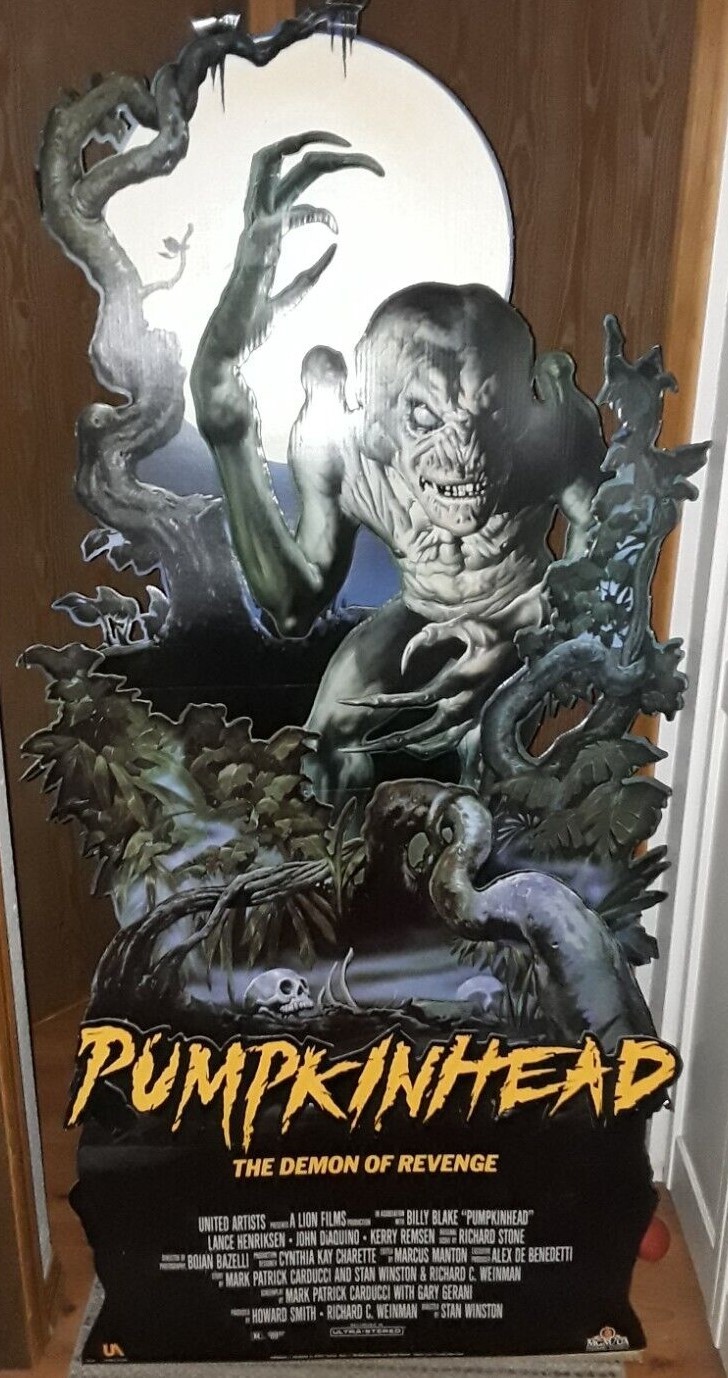


19 notes
·
View notes
Text
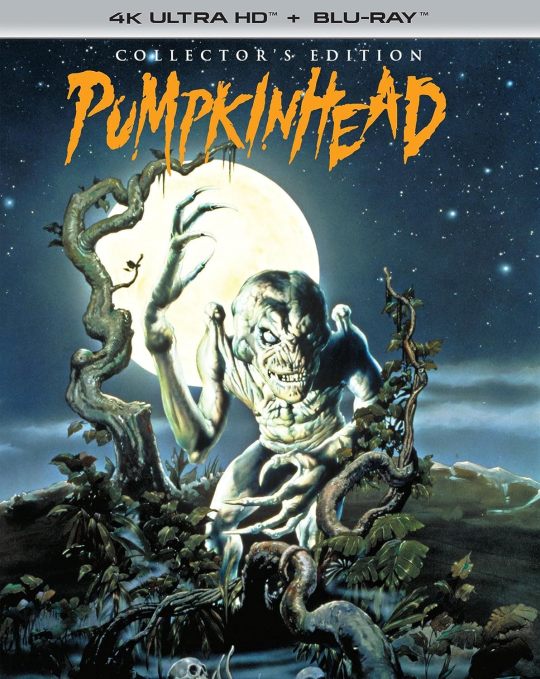
Scream Factory has revealed the specs for its Pumpkinhead 4K Ultra HD + Blu-ray, which releases on October 10. The 1988 horror film marked the directorial debut of special effects legend Stan Winston (Jurassic Park, Terminator 2).
Shout Factory is offering an exclusive set with an 18x24 poster, a prism sticker, a set of five enamel pins by Matthew Skiff (limited to 500), and a set of five 8x10 lobby cards by Beyond Horror Design (limited to 500). Pictured below, it costs $139.99.
Mark Patrick Carducci (Neon Maniacs) and Gary Gerani (Trading Point) wrote the script. Lance Henriksen stars with John D'Aquino, Jeff East, Kerry Remsen, and Tom Woodruff Jr. as Pumpkinhead.
Pumpkinhead has been newly scanned in 4K from the original camera negative with Dolby Vision HDR as well as DTS-HD Master Audio 5.1 and 2.0 sound. Special features are listed below.

Disc 1 - 4K UHD:
Audio commentary by co-writer Gary Gerani and creature creators Tom Woodruff Jr. and Alec Gillis
Disc 2 - Blu-ray:
Audio commentary by co-writer Gary Gerani and creature creators Tom Woodruff Jr. and Alec Gillis
Remembering the Monster Kid: A Tribute to Stan Winston - Interviews with actors Lance Henriksen and Brian Bremer and special effects artists Alec Gillis, Tom Woodruff Jr., and Shannon Shea
Interview with producer Richard Weinman
Interview with actor John D'Aquino
Interview with actor Matthew Hurley
Pumpkinhead Unearthed - 5-part making-of documentary
Demonic Toys featurette
Behind-the-scenes footage
Still gallery
Theatrical trailer
Vengeance: The Demon alternate title card
When a group of teenagers inadvertently kill his only son, Ed Harley (Lance Henriksen) seeks the powers of a backwoods witch to bring the child back to life. But instead, she invokes “Pumpkinhead” – a monstrously clawed demon which, once reborn, answers only to Ed’s bloodlust. But as the creature wreaks its slow, unspeakable tortures on the teens, Ed confronts a horrifying secret about his connection to the beast – and realizes that he must find a way to stop its deadly mission before he becomes one with the creature forever.
Pre-order Pumpkinhead.
#pumpkinhead#lance henriksen#stan winston#horror#80s horror#1980s horror#scream factory#dvd#gift#shout factory#matthew skiff#beyond horror design#creature feature#80s movies#1980s movies
17 notes
·
View notes
Text
Pumpkinhead (1988)
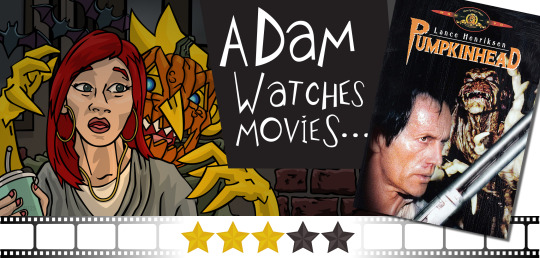
Pumpkinhead isn't a particularly frightening or suspenseful or horror film but I still find myself recommending it. The acting is pretty good, the special effects are terrific and the story original.
Ed Harley (Henriksen) has just learned that his son has been killed. The teenagers who ran him over just left him behind to die. Filled with a desire for vengeance, Harley calls upon a vengeful demon to make them pay. This vengeance, he soon realizes, comes at a cost too high for even him to pay.
I know Pumpkinhead has its work cut out for it due to that title but it works when you see it play out. Set in a remote area in the southern United States, there’s something otherworldly about the land. The isolation, the slow crippling heat that compels people to laze around, the natural mythology of the south makes this strange tale feel like the origin of an urban legend. You assume “Pumpkinhead” is the name people give to the monster because everyone who knew what it was actually called is long gone. It's an effort to get people not to take the macabre tale too seriously but everyone knows, deep down, it's a very real evil.
The characters are more developed than you'd assume. Ed and his son make for a sweet, believable family. I’m always wary of child actors, particularly in horror films, where the acting can often be sub-par. Young Matthew Hurley is great in his role. When the kid got hurt, I felt genuinely upset because I'd grown to like him. Similarly, I thought the teenagers -for what they are- were well developed too. They give a legitimate explanation for their actions and are foolish but generic bullies. While there isn’t much tension in the scenes where Pumpkinhead is walking around killing these teenagers, seeing them try to figure out if they should stay with the injured boy, run away, find a scapegoat to blame or do something else and then have their decision literally come back to haunt them makes you unsure how to feel about either camp.
The titular monster lacks personality. It does have a supernatural element to it that you haven't been before, however, and the special effects are terrific. I would have expected nothing less of Stan Winston.
It’s funny that the elements you'd expect the film to put all its efforts into do not achieve the same level as what you assumed would be afterthoughts like the characters, drama, and original mythology. Pumpkinhead is skillfully brought to life but it looks more like an alien than a demon. The kills? not particularly interesting because Pumpkinhead is nothing more than a monster who grabs people and tosses them around until they’re dead.
I’m unsure who will enjoy Pumpkinhead more; hardcore horror fans will want to check it out as a curiosity, casual movie-viewers won’t really find it frightening... maybe special effects enthusiasts? Ultimately the ideas and story (particularly the ending, which is terrific) are more interesting than the final results. It’s more of a rental than a forgotten classic. It's still far better than anything titled Pumpkinhead has any right to be. (Fullscreen version on DVD, December 30, 2014)
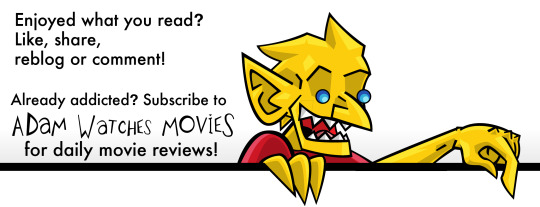
#pumpkinhead#movies#films#reviews#movie reviews#film reviews#horror movies#horror films#stan winston#richard c. weinman#gary gerani#mark patrick carducci#lance henriksen#john d'aquino#kerry remsen#1988 ovies#1988 films#pumpkins
4 notes
·
View notes